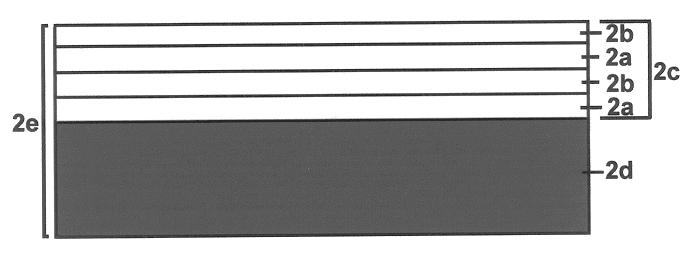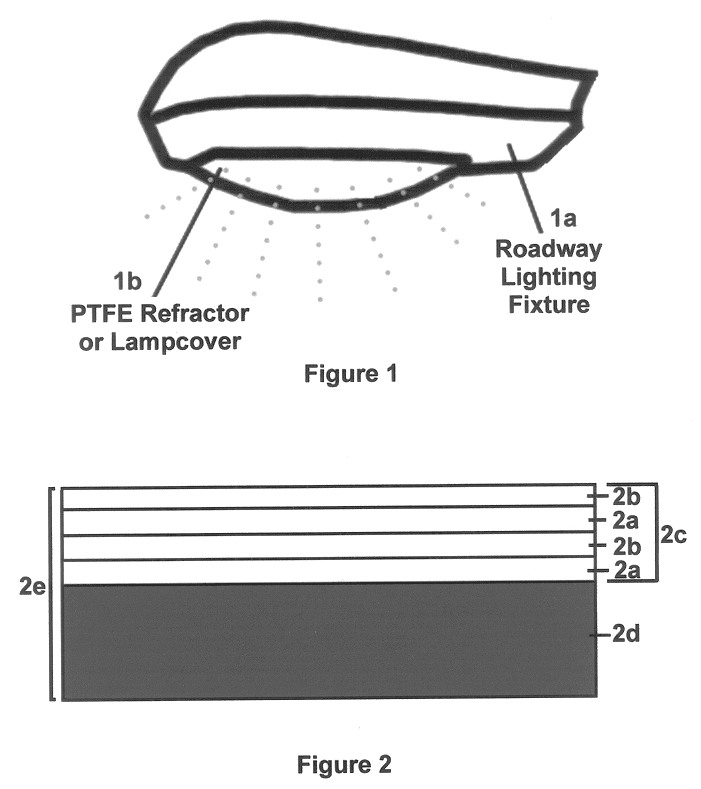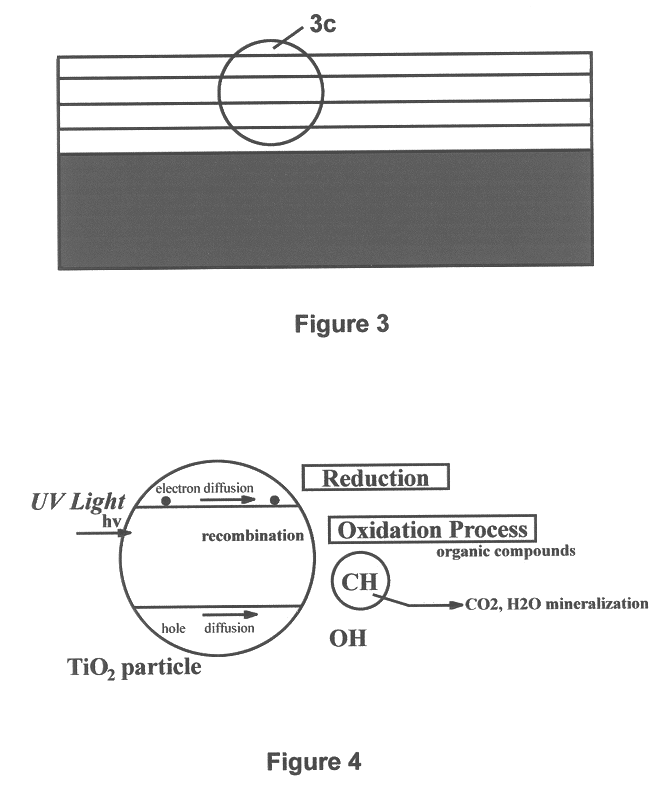Wavelength selective photocatalytic dielectric elements on polytetrafluoroethylene (PTFE) refractors having indices of refraction greater than 2.0
a technology of photocatalytic dielectric elements and polytetrafluoroethylene, which is applied in the direction of physical/chemical process catalysts, natural mineral layered products, instruments, etc., can solve the problems of loss of physical properties, plastic exposed to ultraviolet light, and a network of fine cracks in plastics exposed to ultraviolet ligh
- Summary
- Abstract
- Description
- Claims
- Application Information
AI Technical Summary
Problems solved by technology
Method used
Image
Examples
Embodiment Construction
The present invention now will be described more fully hereinafter with reference to the accompanying drawings, in which preferred embodiments of the invention are shown. This invention may, however, be embodied in many different forms and should not be construed as limited to the embodiments set forth herein; rather, these embodiments are provided so that this disclosure will be thorough and complete and will fully convey the scope of the invention to those skilled in the art. In addition, the thicknesses of the various layers have been exaggerated in the drawings for the purposes of clarity.
FIG. 1 illustrates a side view of a roadway lighting fixture la having a polytetrafluoroethylene (PTFE) refractor or lamp cover 1b which is coated with the photocatalytic dielectric element according to the present invention. However, the photocatalytic dielectric element can coat a variety of optical substrates other than roadway refractors and lamp covers, such as the windows in a building, a...
PUM
| Property | Measurement | Unit |
|---|---|---|
| wavelength | aaaaa | aaaaa |
| temperature | aaaaa | aaaaa |
| angle of incidence | aaaaa | aaaaa |
Abstract
Description
Claims
Application Information
 Login to View More
Login to View More - R&D
- Intellectual Property
- Life Sciences
- Materials
- Tech Scout
- Unparalleled Data Quality
- Higher Quality Content
- 60% Fewer Hallucinations
Browse by: Latest US Patents, China's latest patents, Technical Efficacy Thesaurus, Application Domain, Technology Topic, Popular Technical Reports.
© 2025 PatSnap. All rights reserved.Legal|Privacy policy|Modern Slavery Act Transparency Statement|Sitemap|About US| Contact US: help@patsnap.com



